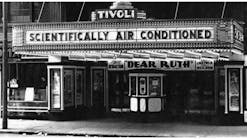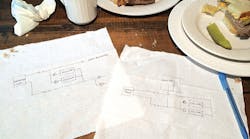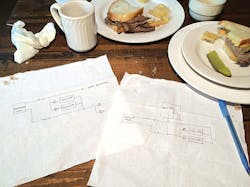'Lunching and Learning': Food for Thought on Campus Chilled-Water Design
In February, I was contacted by Jeffrey Newcomb, a consulting engineer from Coal Valley, Ill.
“I am working on an article about decoupling chilled-water production from its consumption for buildings and/or an entire campus,” he wrote. “An outgrowth of this decoupling is a change in chilled-water distribution that ends up looking like a city water-supply system that is redundant, failure-resistant, and easily expanded.”
He asked if I would be interested in such an article. Of course I would, I told him. Two days later, he sent to me “A Civil Engineer’s View of a Campus Chilled Water System,” an article written entirely as a conversation between two engineers—the fictional Fred and William—having lunch. As entertaining as the article was, I was not sure how it would go over with HPAC Engineering’s readers, so I sent it to one, a longtime member of the magazine’s editorial advisory board.
“I love the way this paper was written,” the advisor said. “Over my 40-plus years as a consulting engineer, I have literally had hundreds of such lunch meetings. … It’s just what engineers do. The amazing part is I’ve never seen anyone write about it before! Because of that, I think it is a notion that will resonate among your readers.”
With that, I was sold on the format. But what about the content?
“Campus chilled-water systems have been around a while, but city water systems have been around a lot longer,” Jeffrey explained. “Maybe some of the problems with campus chilled water have been solved by city water engineers.”
That explained why he made Fred a mechanical engineer and William a civil engineer.
“There are a lot of cross-discipline friendships out there,” he said. “Even contractors, architects, and engineers can be friends. I learned—and still learn—a lot from contractors and architects. Their viewpoints are different, and some things are obvious to them that are hard for us to see because their experiences are different.
“Sometimes,” he added, “communication will solve a lot of problems or keep the small problems from becoming big problems.”
Communication is Jeffrey’s ultimate goal with his article.
“I am hoping others will send in ideas that just might need to have a little more exposure to really drive more imagination and innovation in our field,” he said.
In the case of our editorial advisor at least, he has succeeded.
“The first time I went through it, I found myself saying, ‘No, there’s a better way to do that,’ and got a piece of paper to start sketching,” our editorial advisor said. “It could have been a place mat, but I was in my office.”
Please read Jeffrey’s article, “Lunching and Learning: A Civil Engineer’s View of a Campus Chilled-Water System,” and let us know what you think of the format. If you were sitting at the table next to Fred and William and overheard their conversation, would you have something to add? Also, if you recently had a lunch discussion on an interesting engineering topic, let us know; it could be food for thought for Fred and William’s next lunch!










